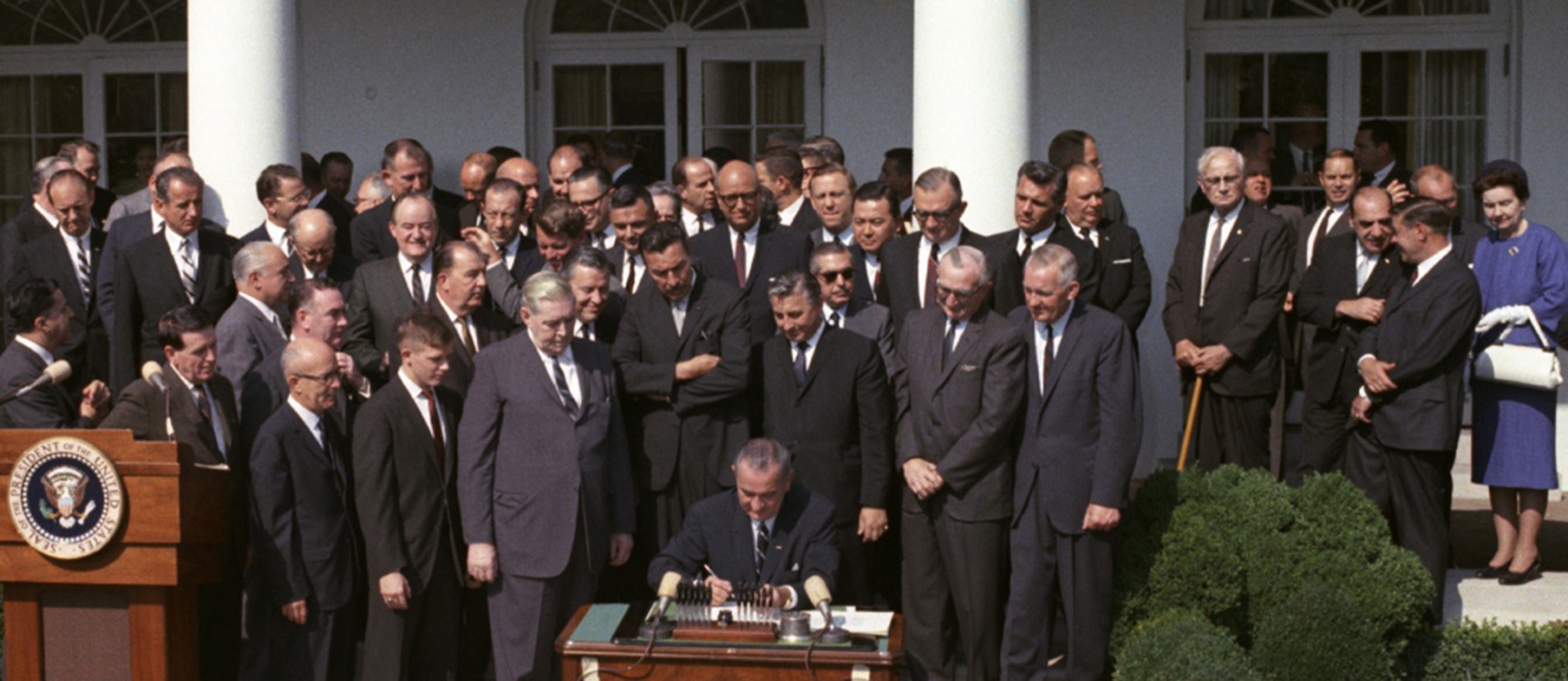


In December 2023, the Biden Administration released the much anticipated, and much criticized, “2023 Horizontal Merger Guidelines.” The Guidelines, which are a joint production of the Federal Trade Commission and the Department of Justice, are meant to be a reference tool to advise enforcers on how to scrutinize merging firms. They updated the agencies’ enforcement priorities, procedures, and expectations from the previous “2010 Merger Guidelines,” a product of a previous era. The difference in enforcement focus and priorities is stark: One codifies the maverick and aggressive antitrust disposition of the leadership in the FTC and Department of Justice, namely the priorities of Lina Kahn and Jonathan Kanter, the other represents decades of legal-economic learning that has been the status quo since the 1980s.
The new 2023 Guidelines cite case law that has since been repudiated by more recent Supreme Court rulings, feature outdated economic presumptions about market share, and employ overly speculative methods to determine harm to competition. The cases brought under the spirit of the Guidelines, such as the 2022 Microsoft-Activision merger challenge, have failed in large part because of the stark difference between agency priorities and legal precedent. Despite these challenges, the Guidelines will likely accomplish what appears to be the primary objective: entrenching the legacy of the Neo-Brandeisian antitrust movement and discouraging mergers through the threat of enforcement action.
The Guidelines in Context
A core talking point used by those who have pushed the new guidelines has been that they are deeply rooted in the country’s antitrust jurisprudence and that the DOJ Antitrust Division read every single Supreme Court and appellate decision to craft them. On CNBC, Assistant Attorney General John Kanter reiterated this point and remarked further that the 2023 Guidelines are the first to ever cite legal precedent. While his assertion is true on its face—the new guidelines do cite legal precedent—it is misleading because much of the older precedent cited in the Guidelines has been repudiated by more recent court rulings and advances in legal-economic understanding.
American antitrust enforcement has undergone a long and dynamic transformation since the passing of the Sherman Antitrust Act in 1890. For much of the twentieth century, competition jurisprudence followed the “big is bad” approach, employing structural presumptions that assumed competitive harm based on market shares and attempting to balance the welfare of competing firms with consumer benefit. For example, in 1962, the Supreme Court made a landmark ruling in Brown Shoe v. US, holding that a merger that produced efficiencies that lowered prices or increased quality for consumers would still be anticompetitive because it may further market concentration. The Brown Shoe decision is cited heavily in the 2023 Merger Guidelines to justify the government’s reinvigorated suspicion of industry consolidation trends and vertical integration. Furthermore, the Guidelines elevate the use of “Brown Shoe Factors” which is essentially an eyeball test of market definition, to be on par with the more precise Hypothetical Monopolist Test, which employs statistical analysis to make a determination.
A year after Brown Shoe, the Court ruled in another foundational case for skeptics of market consolidation, United States v. Philadelphia National Bank, which established a rebuttable presumption that mergers resulting in a collective market share over 30 percent are definitionally anti-competitive. Although this presumption is still in use today, it can be easily overcome with numerous alternative benefits arguments such as the ability to offer more competitive services. The new Guidelines seek to reinvigorate and further entrench structural presumptions and downgrade the importance of efficiency in considering the competitive effects of consolidation.
Herbert Hovankamp of the University of Pennsylvania explains that the Brown Shoe decision represents the zenith of an understanding of economics that predates the prioritization of empirical evidence and modern economic analysis, commonly called the Chicago School. Hovankamp describes the evolution of economic analysis post-Brown Shoe by explaining:
When these cases were decided in the mid-sixties, neither the antitrust agencies nor the courts had useful empirical theory about the link between mergers and market performance. That would come later. Even the 1968 Merger Guidelines did not expressly tie merger policy to the threat of higher prices, although the 1982 Guidelines did.
Hovankamp explains that in the years following Brown Shoe, the Supreme Court began a steady journey toward repudiating the logic of its decision through a series of verdicts that emphasized the importance of harm to consumers, ultimately paving the way for the birth of the Consumer Welfare Standard. In 1977, the Court’s decision in Brunswick v. Pueblo Bowl-O-Mat articulated the famous maxim that the purpose of American antitrust law is to protect the competitive process, not individual competitors. From there, most of the features of modern American antitrust, such as the rigorous use of empirical methods and aversion to speculative, precautionary intervention find their roots.
Despite attempts to use the new Guidelines, courts will likely continue to view them with skepticism, and it remains to be seen what, if any, effect the document will have on antitrust enforcement over the longer run.
The Guidelines vs the Rule of Law
The 2023 Guidelines don’t introduce new legal rules or concepts but codify the disposition of the current leadership of FTC and DOJ toward merger review. Although the document was only released in December 2023, it has been substantively practiced since the appointment of Lina Khan and John Kanter.The use of the principles the guidelines formalize has resulted in the slew of headlines and court losses observed since 2021. Creating the odd reality of a “new” set of guidelines where many of the concepts and methods suggested have already been rejected by the court system. Despite this reality, it is clear that the DOJ and FTC will continue to push for their use, bringing more cases based on these principles. Even if they lose every case, the agencies under the current leadership are likely to use their discretion to challenge mergers as they see fit and dramatically raise the cost of consolidation.
For these exact reasons, the former FTC Director of Policy Planning, Billal Sayyed, submitted a comment criticizing many of the directives outlined in the Guidelines. He recommended that the new language about challenging vertical mergers should be completely rewritten and that the segment addressing perceived or actual potential competition ought to be removed entirely. In practice, the FTC has tried and failed to implement these novel theories of harm with its failed lawsuit against the Microsoft-Activision vertical merger and unsuccessful attempt to bring a potential competition argument against the Meta-Within merger.
Most notably, Sayyed condemns the introduction of language challenging mergers that merely “further a trend towards concentration” without any consideration for countervailing benefits or business necessity. This guideline runs counter to decades of jurisprudence around the Consumer Welfare Standard. Alden Abbott, former FTC General Counsel, has been far less patient, arguing that the Guidelines should be completely withdrawn and rewritten with language stating the exact opposite of many of the principles they lay out.
Despite attempts to use the new Guidelines, courts will likely continue to view them with skepticism, and it remains to be seen what, if any, effect the document will have on antitrust enforcement over the longer run. There will certainly be a back and forth between regulators arguing the Guidelines reflect a new methodology and approach that is grounded in a different understanding of economics and judges applying established law and precedent.
Regardless of whether the FTC and DOJ and their leadership are able to usher in a dramatic shift in antitrust jurisprudence, the 2023 Merger Guidelines are a win for their agenda. Even without a single court victory, the Guidelines’ ambiguous and speculative language signal to private parties that the legal risk of merging is higher than ever, and that enforcers will bring cases that may ultimately fail but will nonetheless inflict substantial legal costs on those seeking to merge. Indeed, the Guidelines have been described internally by agency officials as both a summary of modern enforcement doctrine and a deterrent. Chilling economic consolidation with legal uncertainty is a feature not a bug for NeoBrandeisians. The 2023 Merger Guidelines are a policy victory for them because they drastically hike merger transaction costs and will institutionalize the NeoBrandeisian agenda for years to come.
As a result, American companies will find themselves in a dramatically more hostile regulatory environment, discouraging mergers of all kinds, horizontal, vertical, or even conglomerate, deterring innovation and growth. Furthermore, the Consumer Welfare Standard will be under constant judicial attack as the FTC and DOJ continue to advocate for greater antitrust liability with every lawsuit. Sound competition enforcement would require that the 2023 Merger Guidelines be repealed and replaced.









